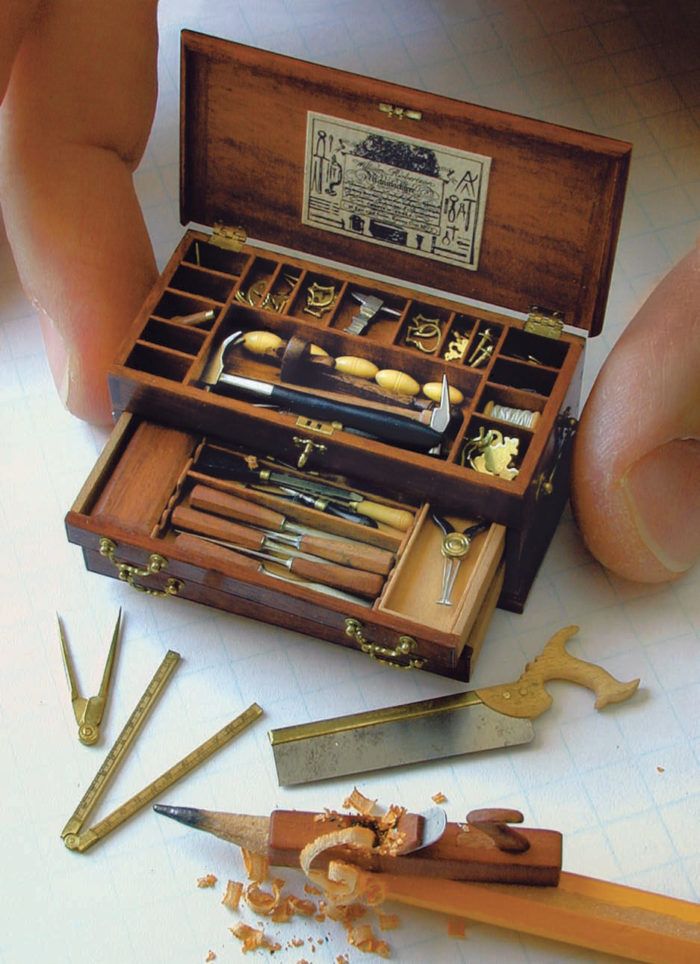
Ask William Robertson what he does for a living and he might pull this toolbox out of his pocket. Robertson, who lives in Kansas City and has been making miniatures for 32 years, travels widely and often carries the toolbox with him as a calling card. It travels in its own specially made case, which might otherwise comfortably cradle an egg. Built at 1⁄12th scale, the toolbox and its contents are an adaptation of the Hewlett chest, a “gentleman’s chest” made in England in 1773 and still filled with its original tools. Now in the collection at Colonial Williamsburg, the original is mahogany, but Robertson used mopane, an African wood whose extremely fine grain makes it look realistic in scale work.
The little chest’s joinery, much of it cut with a jeweler’s saw, includes dovetails on the case, the drawers, and even on the Swiss pear tray for the calipers in the upper drawer—though the sides of the tray are just 0.015 in. thick. Robertson used African blackwood for the handle of the claw hammer and boxwood for the egg-shaped handles of the five gimlets, whose metal shafts slide into holes for storage.
All the tools are functional, from the hand-engraved boxwood folding rule with its five-leaf hinge, to the brass and steel backsaw boasting 160 teeth per inch. The two tiny handplanes he made for this chest not only work, they work so well they’ve become an indispensable part of Robertson’s kit for making more miniatures.
Photo: Bruce Dale



















Log in or create an account to post a comment.
Sign up Log in